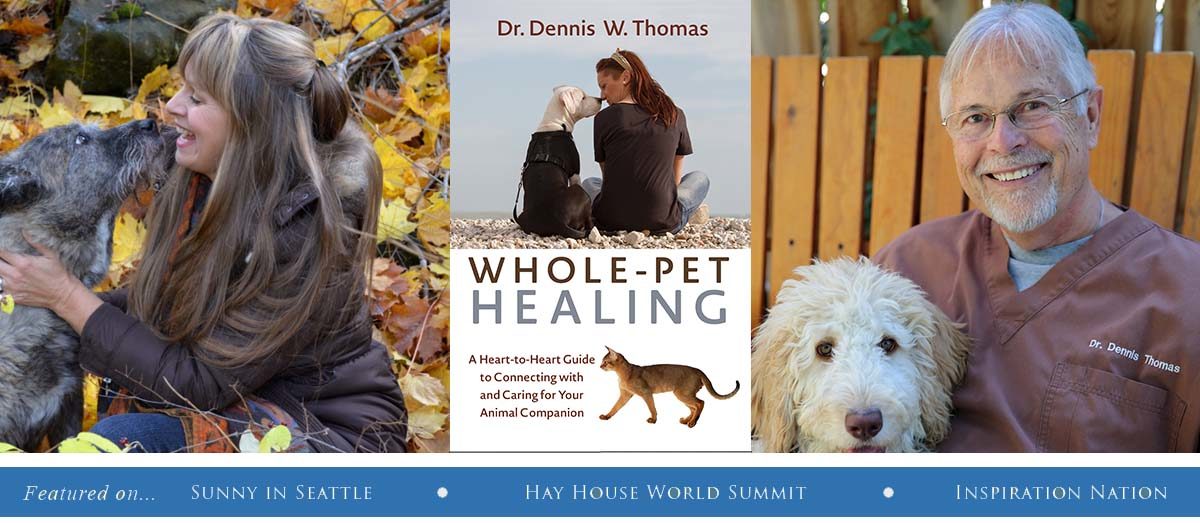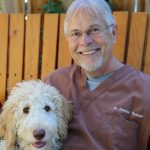It was forty one years ago last month. I was an excited young man starting the first day of veterinary college. At that time, one in nine applicants were admitted to vet school. One in three applicants were admitted to medical school. It was a moment of mixed emotions; satisfaction from an enormous goal accomplishment, fear of making it through vet school and excitement of starting a career that was bathed in respect.
I can still remember old Dean Shelton telling the 138 eager students, “You will never get rich as a veterinarian, but you will always have a job and it will be a satisfying career if you approach it with compassion.” I think that the statement should have been a mantra for all vets throughout their careers.
There were hard lessons but essential lessons that needed to be learned. The first lesson was that your clients (and their animals) provided your sustenance. They paid for your mortgage, the food on your table, education for your children and much much more. When you keep that in mind, you never loose site of the fact that veterinary medicine is a service profession and service is much more than just providing health care for a client’s animal.
Veterinary life started out in a small town in central Texas as a mixed practitioner. One day, I might see a dozen small animals, several horses, cattle, sheep, goats and so on. I was the ultimate jack of all trades and a master of none. I was also a friend to my clients and in time, I learned the second of lessons that was critical for my success. The client must trust their vet. Trust is gained and that takes time and it requires more than just success in treating animals. It means having compassion and empathy for your clients. Sitting down at the kitchen table with them, having coffee and a piece of pie and discussing what was on their minds. I became a member of their extended family and it was an honor. I remember working on an elderly lady who was the sole caretaker of the old family farm. She had no electricity or running water and drove an old, green Ford pickup to town with a large bottle in the back to haul water from town to her farm. She had a pack of four dogs who lived with her and they went everywhere she went. One of them was a large, grey, curly-haired dog she named Poodle Dog. When I asked her how she came up with the name, she said, “I always wanted a Poodle dog but never had one, so I just gave him the name and it satisfied me.” She never paid her vet bill with money. Instead she offered me fresh eggs and vegetables from the garden. It was more than enough.
Even when I left the mixed practice and moved to the city and opened a small animal hospital, I never lost that feeling of appreciation for my clients. This was a time before ultrasounds, echocardiograms, brain scans, even computers. Instead, we used our eyes, hands, nose and intuitive feelings to lead us in the direction of healing our patients and in doing so, we learned a lot about health care that did not come with modern ancillary testing. Trust was always the prominent factor. Vet medicine is never a black and white business. We spend most of the time in the grey area and to do so with confidence, our clients must trust us. Trust comes from the client knowing your primary intent, to help their pet. Anything else, will crack that bond and the trust will never be the same. If I told a client that we needed to do some blood work or an X-ray, they would say, “Certainly. If you think it needs to be done, then do it. I trust you.” If they thought for one moment that I was doing it for monetary gain, the trust would fly out the window and never return.
This was a time before emergency clinics. A time when the phone rang at the house at all hours and waking up from a deep sleep to go to the hospital and perform a cesarian section at 3am in the morning. Alone, with no help other than the client. Extracting a puppy from the dog’s uterus and handing it to the client to clean off and help it start breathing. These are the things that create a deep bond between vet and client. It was a time when I had a large cage next to the bed so that I could take a patient home with me, afraid to leave them alone at night at the hospital. Many nights, a pet with an IV attached to their front leg, lied next to me as I slept in my bed, waking up throughout the night to check on its welfare.
Another enormous lesson that I learned that most vets haven’t. If you keep focused on your intention, to help the clients and their pets, the bottom line (income) will always take care of itself. I remember during an economic downturn and many vets were struggling with their business. I was talking to a pharmaceutical rep who asked me how I managed to keep my practice growing while others around me struggled to pay their drug bills. I told him that I never worried about the income and focused on taking care of the client, especially during times when they were struggling.
It is not a surprise that when I started in veterinary practice, that vets were ranked number one in most respected professions. It is also not a surprise when I see that we no longer hold that rank. We now are listed around number four. Nurses are number one. Why? Because they put their patients first over all other factors. No surprise and they deserve that respect.
So, what changed? I suspect that there are many variables. The cost of going to vet school has skyrocketed and young vets are hired and paid by percentages of earned income. The more money they generate for the clinic, the more they take home to pay their bills. Money might not be the primary intent, but it is certainly a factor. Another factor is that vets now believe that they can make a lot of money being a vet and there are publications and instructors that teach them how and many practice owners are devoted students to that part of their education. Corporate veterinary medicine is a major player now and getting stronger all of the time. These companies are run by non-veterinarians whose primary intention is making money.
While doing research for my book, I learned that the cost of veterinary services is rising about 10% per year. Considering that family income is way below that, it is not hard to see that we are pricing ourselves out of business. We now have a term that I never thought I would use. It is called economic euthanasia. It means that the pet is euthanized because the client could not afford the vet bill. Sorry, but this is not how I was raised as a veterinarian. We have always dealt with clients who struggled to pay the vet bill and we always managed to come up with a way to solve the problem. Euthanizing the pet was never an option. I had a lovely client tell me that she witnessed a lady vet telling an elderly gentleman that his Labrador Retriever had a torn cruciate ligament that required surgery and the cost would be around $3000. The old gentleman told the young vet that he lived on social security and could not afford the surgery. She euthanized the dog. She did not look for a solution and there is ALWAYS a solution.
It is not a surprise that veterinarians are bailing out of the profession. They are leaving the business in record numbers creating vet shortages in many clinics across the country. Stress is the major factor they say. I feel bad about this because I see a lot of well-intended people who genuinely love animals who have lost their way and don’t know how to find their way back. They were never told that if they would just focus on taking care of their clients and the animals, that everything would work out fine. Universal Law makes sure of that.

